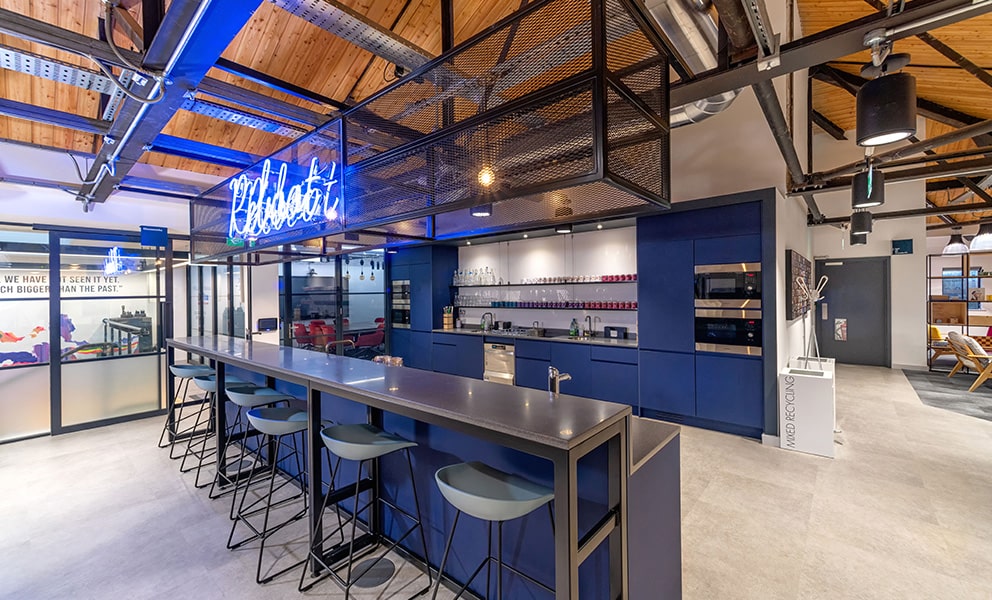Commercial Office Lighting
Comfortable Mood Lighting for Productivity and WellbeingImportance of Lighting Design in the Office, Retail and Leisure Space
Lighting is an essential aspect of office design, and it plays a crucial role in creating a comfortable, productive, and safe work environment. Proper lighting can improve the overall mood and productivity of employees, while inadequate lighting can lead to eye strain, headaches, and fatigue.
One of the most important reasons to prioritize lighting in the office is to provide sufficient illumination for employees to perform their tasks effectively. Insufficient lighting can result in errors, reduced productivity, and even accidents. Proper lighting can also reduce eye strain, headaches, and other physical discomforts that may impact employee health and well-being.
Comfort Office Lighting
Another reason to prioritize lighting in the office is to create a comfortable and welcoming atmosphere. The right lighting can help create a warm and inviting ambiance, which can improve employee morale, reduce stress, and increase job satisfaction. On the other hand, harsh or uninviting lighting can make employees feel uncomfortable and unwelcome, leading to negative attitudes towards work and reduced productivity.
In addition to its practical and psychological benefits, proper lighting can also have a significant impact on the aesthetics of the office. By using lighting strategically, you can highlight architectural features, create focal points, and add depth and dimension to the space. This can enhance the overall visual appeal of the office and create a more engaging and dynamic environment.
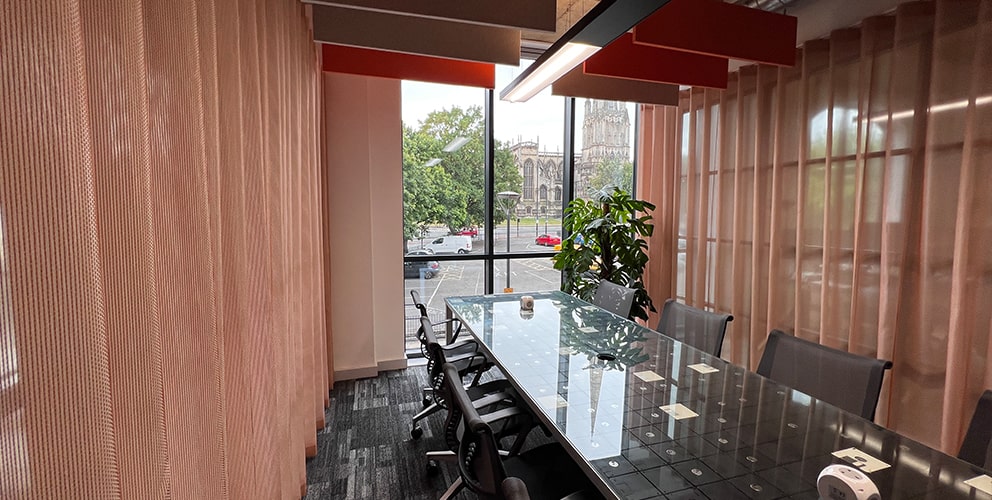
Office Light Layering
Lighting layering is a powerful technique that can transform any room into a welcoming, warm and inviting space. By layering different types of lighting, you can create a variety of moods and ambiance that will enhance the overall feel and function of your space.
The first layer of lighting is ambient lighting, which provides the overall illumination of the room. This can be achieved through ceiling-mounted fixtures, such as hanging or recessed lighting. By placing ambient lighting at a dimmer setting, you can easily adjust the brightness level and create a relaxed or more energetic mood as per your preference.
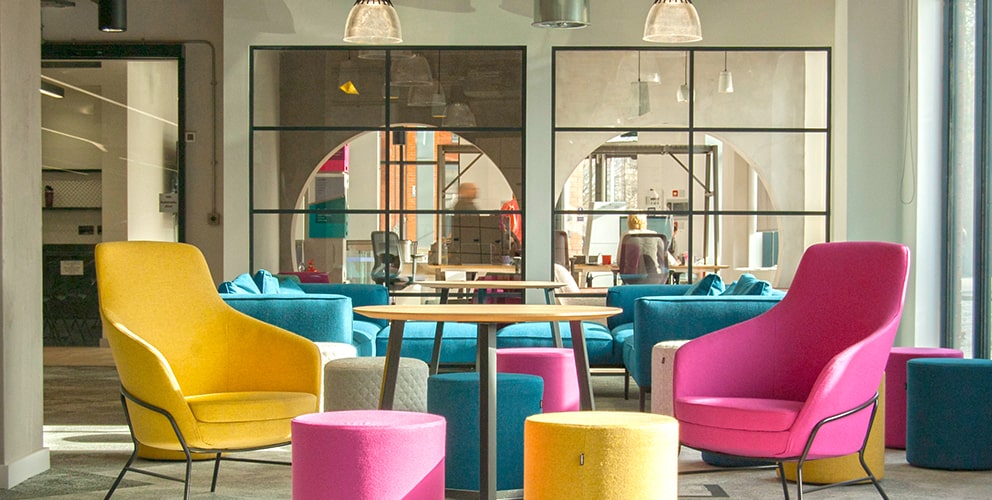
Office Task Lighting
The second layer of lighting is task lighting, which is used to illuminate specific areas and activities such as reading, writing, or working. Task lighting can be achieved through desk lamps, floor lamps or pendant lights placed at strategic locations over workspaces.
By dispersing an even quantity of light across the desk area and limiting monitor illumination, task lighting has the potential to reduce eye strain when using a computer.
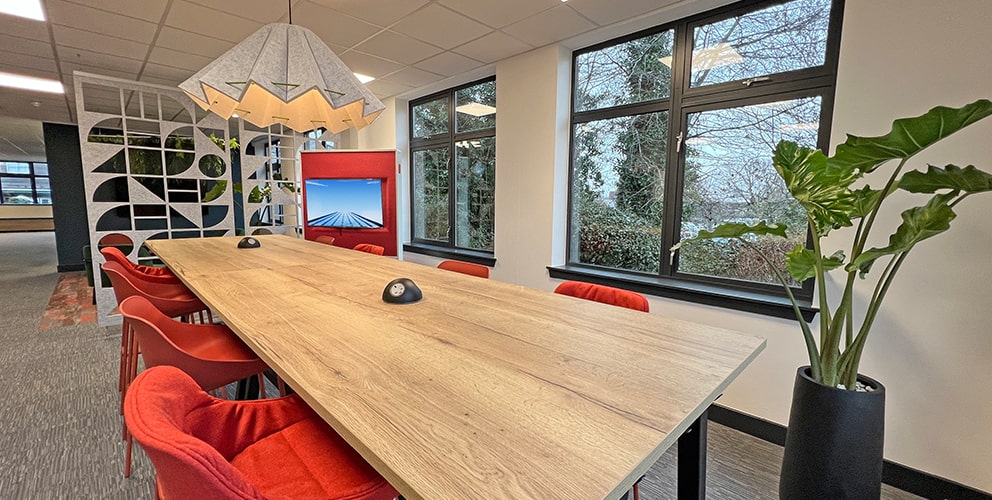
Accent Lighting
The third layer of lighting is accent lighting, which highlights specific features or objects in the room. This can be achieved through the use of spotlights, wall sconces or track lighting. Accent lighting can add depth and drama to your space by drawing attention to specific areas or objects, such as artwork or architectural features.
When layering your lighting, it’s important to consider the function of each layer and how they work together to create a cohesive and welcoming atmosphere. By using a combination of ambient, task and accent lighting, you can create a beautiful and functional space that meets all of your lighting needs.
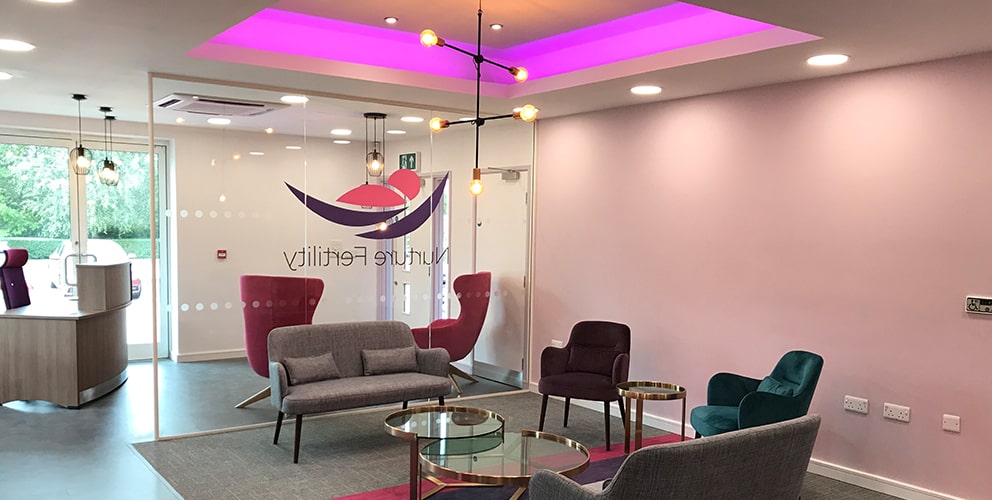
Acoustic Pendant Lighting
Acoustic pendant lighting is an essential element in any modern interior design project, not only does it enhance the aesthetic appeal of a space, but it also has a significant impact on the acoustic quality of a room.
One of the main advantages of acoustic pendant lighting is its ability to absorb sound. The design of these fixtures includes sound-absorbing materials that help to reduce noise levels and prevent echoes from bouncing around a room. This makes them an ideal choice for spaces where excessive noise can be a problem, such as offices, restaurants, and public areas.
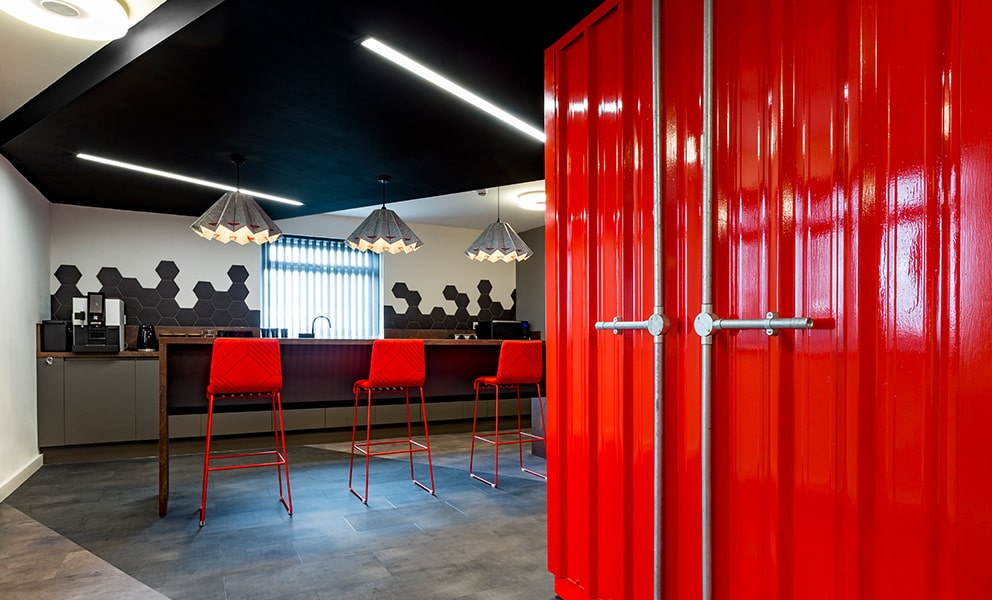
Acoustic Lighting Design
In addition to their acoustic benefits, acoustic pendant lights are also incredibly versatile in terms of design. They come in a wide range of styles, shapes, and colours, which means they can be used to complement any brand focused interior. From modern and minimalist to more traditional and ornate, there is an acoustic pendant light that can be tailored to suit any business.
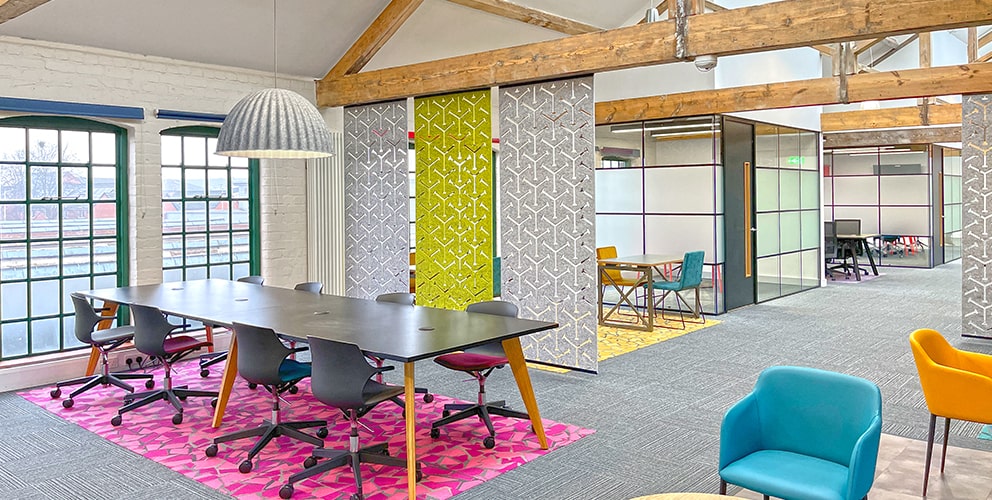
Energy Effiency
Another advantage of acoustic pendant lighting is its energy efficiency. Many of these fixtures use LED bulbs, which are known for their low power consumption and long lifespan. This means they can help to reduce energy bills and minimize maintenance costs, making them an excellent investment for any business watching their energy output and eco footprint.
These office lighting options offers a range of benefits that go beyond simply providing light, including improved acoustic quality, versatile design options, and energy efficiency. So if you’re looking to enhance the functionality and aesthetic appeal of a space, acoustic pendant lighting is definitely worth considering.
